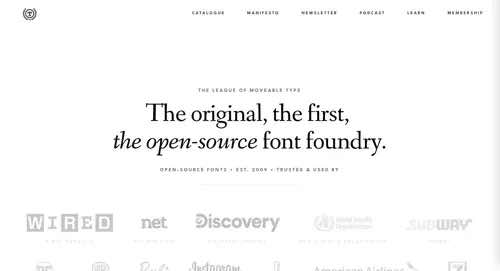
Ray Reddy is a two-time mobile commerce entrepreneur, a Google veteran, and, now, the head of Shopify POS, the company’s in-store platform. He says the future of retail is location-agnostic, where shoppers can easily transition from online to brick-and-mortar without losing account details, order history, and similar info.
That, he says, is the path of Shopify POS.
In our recent conversation, he addressed Shopify’s physical-store penetration, the needs of modern shoppers, backend complexities, and more.
Our entire audio is embedded below. The transcript is edited for length and clarity.
Eric Bandholz: Give us a rundown of what you do.
Ray Reddy: I lead Shopify’s retail product team, focused on evolving Shopify POS into an all-in-one system for in-person commerce, from pop-ups to large multi-store enterprises.
Before Shopify, I built two commerce companies. The first, PushLife, was a mobile commerce platform acquired by Google, which I then joined and led the company’s mobile commerce products. Later, I founded Ritual, a social ordering app for restaurants and businesses. My team and I left Ritual in January this year and joined Shopify.
Shopify serves online and offline merchants in over 170 countries across nearly every vertical.
In online commerce, workflows are largely standardized, including product pages, carts, and checkout flows. But in-person retail varies drastically. A coffee shop operates nothing like a furniture store or a spa. Each vertical has distinct workflows, such as table management, appointment scheduling, or barcode scanning.
Historically, success in physical retail meant focusing on a single niche. However, many verticals also sell online and want one unified system for inventory, customers, and transaction data. They’d rather use a single platform than patch together disconnected tools.
Shopify POS’s flexibility and ecosystem are a long-term fit for many growing businesses.
Bandholz: Tell us about your target audience.
Reddy: Our core point-of-sale customers tend to fall into a few categories: apparel, sporting goods, beauty and cosmetics, and gift or novelty retailers. We’re also seeing growth in pet stores, bike shops, and jewelry retailers.
We now serve brands with over 1,000 stores. That’s been a considerable shift over the last couple of years, from a system that works for a single store to one that also meets the complex needs of large chains.
Point-of-sale capability at Shopify was originally a lightweight add-on to ecommerce. No more. Over 10% of POS users are brick-and-mortar only.
Our vision remains a POS system that’s simple enough for a single store and robust enough to support thousands. We’re making progress, but there’s a lot of work ahead.
Bandholz: How can direct-to-consumer brands use POS?
Reddy: We refer to individuals selling at pop-ups or farmers’ markets as “casual sellers.” That’s often the first offline step for online brands. We’ve seen companies such as Allbirds start small with Shopify and scale into publicly traded businesses with dozens of stores. That kind of journey — from side hustle to national brand — is something we’re proud to support.
Contactless payments — tap to pay — are widespread. We’ve integrated the technology into the entire POS experience. But selling in person is more than taking payments. Sellers need lightweight inventory tools, stock counts, and real-time syncing between online and offline. Something as simple as buying a mattress in-store and having it shipped requires more than a basic payment app.
The key is minimizing friction. A good POS platform shouldn’t force sellers to fumble through screens. It should handle all the backend complexity — inventory, fulfillment, compliance — so sellers can stay present and build relationships with customers.
Bandholz: What’s the POS experience of placing in-person orders for shipment?
Reddy: One of our most recent improvements in Shopify POS is “mixed baskets,” orders that include in-store and shipped items. Merchants previously had to create multiple orders or use workarounds. With the launch of POS 10 in April, in-store staff can process a single mixed-basket order and payment. It simplifies complex workflows.
We look for opportunities to reduce friction by monitoring how customers use POS. For example, POS 10 reduced cart-building times by 5% across the board. Some merchants with complex carts saw up to a 10% improvement in speed.
We’ve also overhauled search. Previously, it required exact text matches, which was frustrating for staff with extensive catalogs. We’ve now introduced fuzzy matching that behaves more like Google Search. One home goods retailer with 47,000 SKUs reported it was a game-changer.
We also focus on ease of use for temporary or seasonal staff. Many stores don’t have time for extensive training. One pop-up apparel brand reported that their seasonal employees were able to learn the POS system in a single shift.
Bandholz: Does Shopify POS link with Shop Pay?
Reddy: Shopify POS integrates with Shop Pay at many retailers, though not all. This integration is a key area of ongoing investment. The future of retail combines the convenience of online shopping with the tangible in-store experience. One common frustration for in-store shoppers is the time it takes to find products or wait for staff assistance, unlike the quick, one-click experience online.
Our goal is to merge online profiles and capabilities with in-store shopping. For example, customers who want items shipped to their homes often have to provide their full address at checkout — information already stored in their Shop Pay profile. Transferring that data instantly to the store system would remove friction and speed up the checkout.
Beyond payment, there’s a huge opportunity to enhance the buyer experience by linking online activity to in-store shopping. Imagine seeing items you added to your online cart just a few feet away in a physical store, ready for purchase. Connecting customers’ online intent with their in-store experience offers a significant advantage and exciting possibilities.
Bandholz: Where can people learn about POS and connect with you?
Reddy: See more at Shopify.com/pos. I’m on X and LinkedIn.






